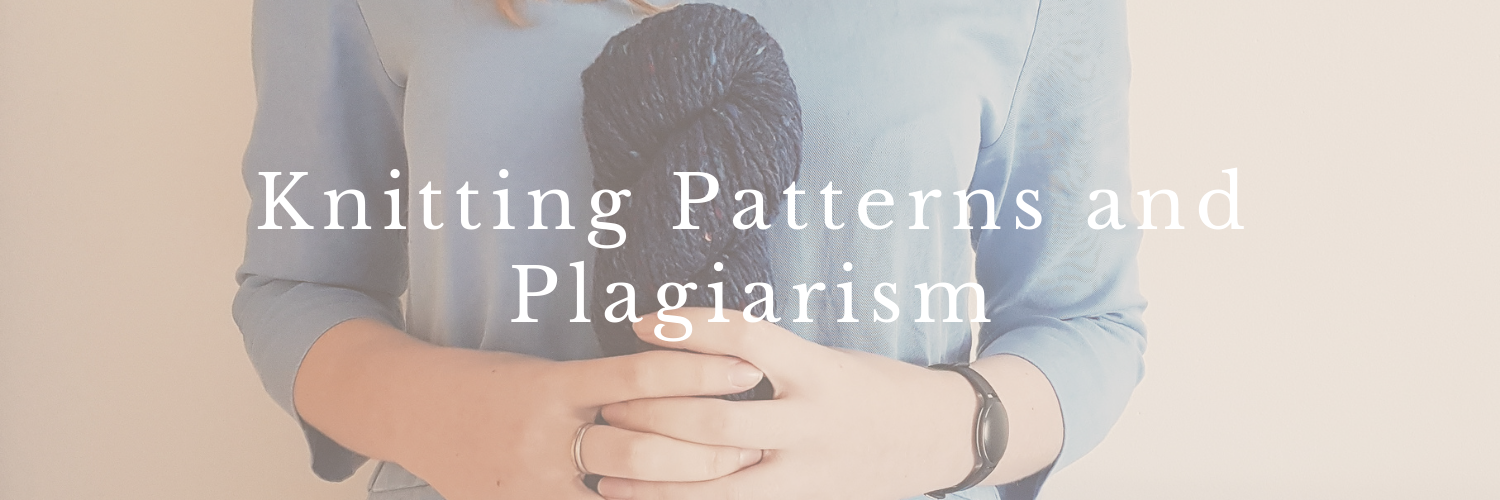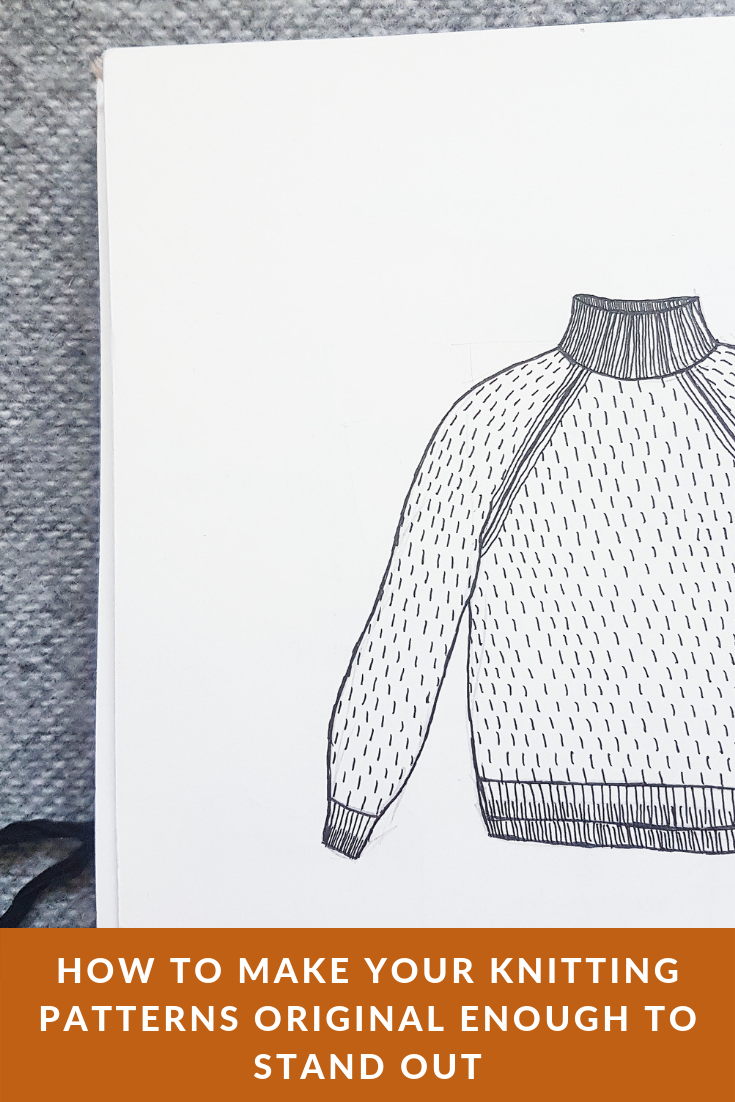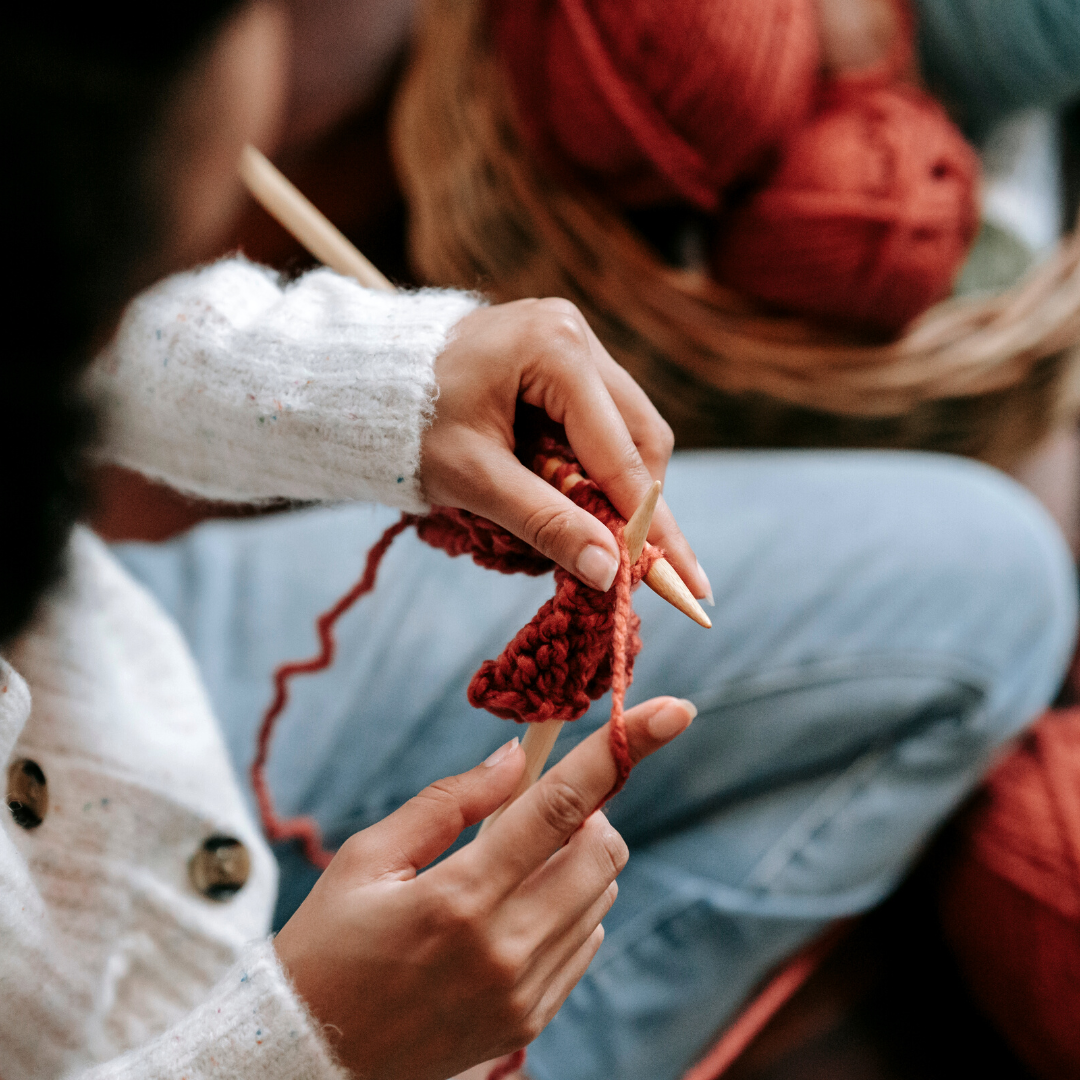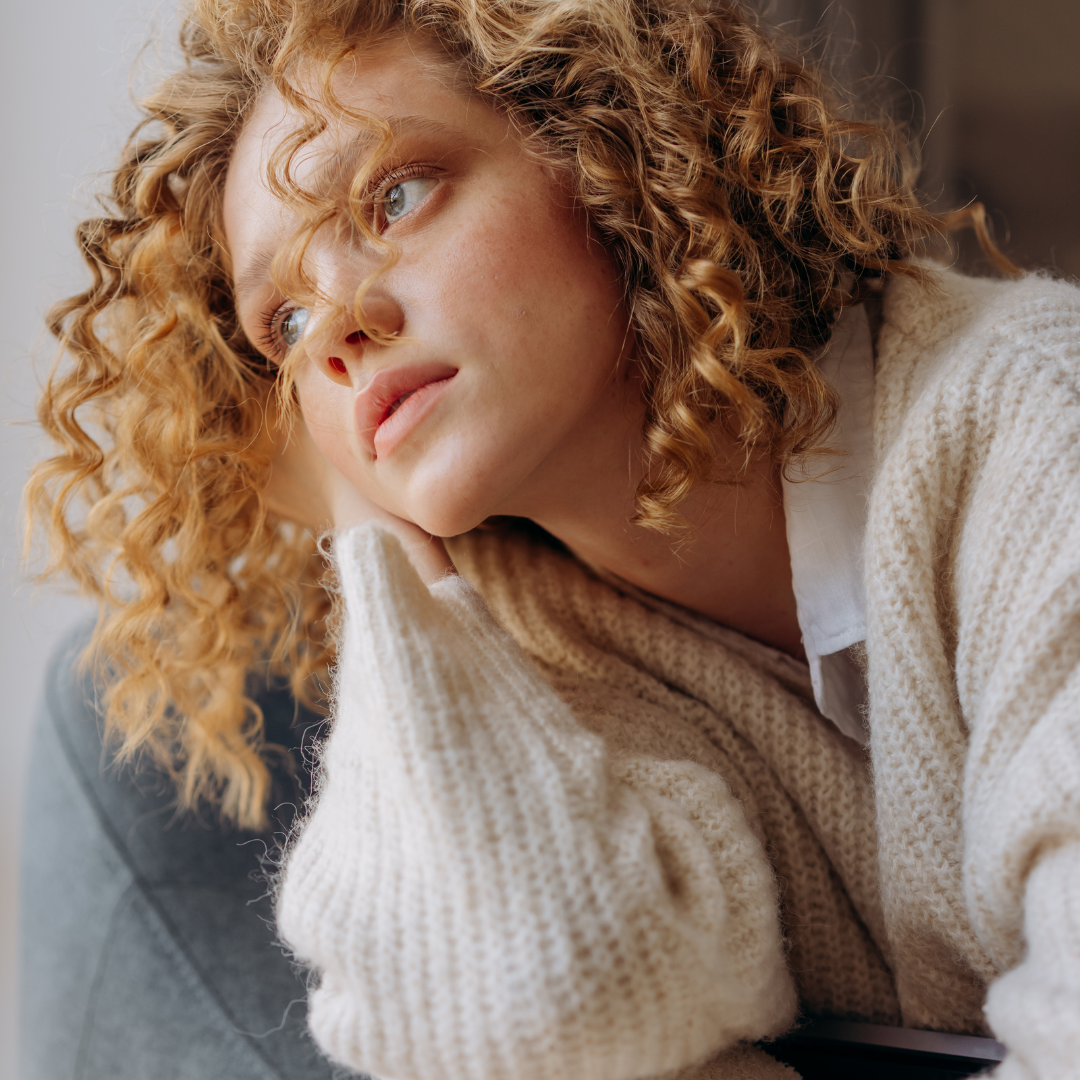Knitting Patterns and Plagiarism: How do I make my pattern original enough?
How original is original enough? This is a question I get a lot when it comes to designing knitting patterns. There are only so many stitches in the world of knitting - isn’t it easy to end up creating something that someone else has already designed?
In this blog post, I’ll be sharing my thoughts on the topics of plagiarism and originality when it comes to knitting patterns. I will also be sharing my best tips on how to set yourself apart from the crowd of knitting pattern designers out there.
Can You Alter Existing Patterns and Sell it as Your Own?
I often see aspiring designers asking for how much you have to alter a pattern before it's legal to publish it. This is the wrong question. Why are you trying to do the bare minimum so that you can release the design as your own?
There is very little joy to be found in making minor alterations to a design and calling it your own. Deep down, you will know that you haven’t done the creative and technical work in order to create the finished pattern. Someone else has and ethically, it is wrong to profit from someone else’s labour.
I think this mindset comes from two places: insecurity and a lack of understanding. If you learn how to create your own original knitting patterns and you believe that you have something valuable to share with the world, you won’t be looking to take this approach.
This stitch pattern is widely available in stitch dictionaries, so there was no need to reference it in my pattern for Shorthand.
Using Stitch Patterns
Designers often use standard stitch dictionaries to find interesting stitches for their designs. If you use a stitch pattern from one of these, it is widely accepted that you don’t need to reference it in your knitting pattern.
However, if you’re using a stitch that is very unusual and you discovered it via another designer’s work or a more unusual stitch dictionary, it is good practice to first ask permission from the designer/writer and share your source somewhere in the knitting pattern. You won’t lose anything by referencing your sources and the designer will receive their deserved credit. It’s a win-win situation!
What if my design looks like someone else’s?
Like stitches, there are only so many garments and accessories in the world. It is possible for you and another designer to unintentionally design the same thing - especially if it’s a basic pattern.
If neither of you is aware of each other’s work and you had no intention to copy, you can just chalk it up to being one of those things. In cases like this, I still think it’s nice to reach out to the designer and explain the situation. I personally think it’s okay for both of you to continue selling the designs, but depending on the designer’s response, you may need to come up with another way of dealing with the situation.
However, if you are intentionally copying or being substantially “inspired” by another person's design and claiming it as your own, that is not OK. Not only are you profiting from their work, but you are also pretending that you designed it. This is wrong in every way.
My Own Originality Worries
When I was about to release my Fragment t-shirt pattern, I wore it to a knitting festival. I was so proud of it and felt fantastic when someone pulled me over to admire my top. However, my heart dropped when they said that the stitch was the same one that had been used by The Westrand Sisters in their Ruta cardigan. They were right.
My Fragment t-shirt unintentionally features a stitch that is almost identical to the one used in The Westrand Sister’s Ruta Cardigan
I’d originally found the stitch in a men’s Brioni sweater and thought it was really interesting. It looked cool in the bulky weight, but I had a feeling it might look even better when knitted loosely in a finer yarn. I’d been planning to design a lightweight linen t-shirt and as soon as I swatched this stitch, I knew it was the perfect match for my new design.
Of course, as soon as I realised that this stitch pattern had already been used by another knitting pattern designer, I was really nervous. It wasn’t from a standard stitch dictionary, so it was quite unusual. I was scared that people in the knitting community would think that I stole the stitch from The Westrand Sisters - especially since I was a new designer at that point. I felt like a total fraud!
In the end, I decided to approach the problem head on by messaging Karin from The Westrand Sisters to explain the situation. I told her that it was not intentional and showed her where I originally found the stitch. She responded quickly with a kind message, saying that this sort of thing must happen all the time and that there are no hard feelings.
I went on to release my Fragment t-shirt pattern and it was very well-received. Despite my fears, nothing bad happened and we both continue to sell our similar knitting patterns to this day!
How to Make Your Knitting Patterns Original Enough
There are several ways to set your work apart, whether it’s by using an unusual yarn, an interesting silhouette, an uncommon stitch, an innovative construction or special details. Select one feature of your design that you want to focus on to set your design apart. I typically choose the special details, which I’ve written a whole blog post about.
Unusual Yarn
Choosing an unusual yarn can be a slightly difficult way to set yourself apart because at least half of the people knitting your pattern will typically choose to substitute the yarn. However, if there is an unusual yarn out there that doesn’t have much pattern support, designing your pattern using that yarn can set you apart because you’re showing makers how they can use it.
Interesting Silhouette
An interesting silhouette can make your pattern really desirable and memorable. Consider Julie Hoover’s Cline sweater - it is essentially a crewneck stockinette sweater (nothing new there!) but it has the most unusual sleeve shape. The proportions and the way they fall look so striking. They have given Cline a cult-like following!
Uncommon Stitch
An uncommon stitch pattern can set your design apart. Before Japanese stitch dictionaries were widely available, some designers would refer to those in order to find lesser known stitches. Now, they can be found in lots of yarn stores, however, they are still quite unusual.
If I want to use an unusual stitch, I like to design the stitch myself. I also like adapting stitches found in stitch dictionaries to put my own twist on them.
Innovative Construction
An innovative construction can be a cool way to set a simple design apart. Perhaps you have found a way to make constructing a certain style of garment easier; maybe it allows you to try it on for size better or perhaps it skips purling or it is just more fun to knit.
I discovered CocoKnits’ wonderful method of constructing set-in sleeve sweaters from the top down with tailored shoulders. Whilst her garments might be classic and simple, the construction and fit of the garments really set them apart.
Be Curious
My biggest piece of advice when it comes to setting yourself apart is to follow your curiosity. You will find your own unique design aesthetic without having to rely upon inspiration from other knitting pattern designers. Trust your own taste, do what feels good to you and take note of what your community particularly loves about your work. Once you’ve found your aesthetic, stick with it until it no longer feels good.
Think about Eli of Skeindeer Knits who is known for her patterns inspired by traditional Norwegian knitting. She knows her style, she knows her customer and she sticks with it. Now, it’s very easy to spot an Eli design!
Bonus Tip: It’s not just about design
Yes, a great design will get you noticed but also, the way you present your design through great photography, clear pattern layout and excellent instructions will set you apart. Commit to making your patterns as high quality and beautiful as you possibly can (it doesn’t have to be expensive - I have DIY’d almost everything so far!) and you will stand out from those who are not able or willing to do so.
Discussion
Have you ever struggled with making your knitting pattern designs original enough? I’d love to hear from you. How will you focus on setting your designs apart, going forward? Leave a comment below to share your thoughts with our supportive community.












